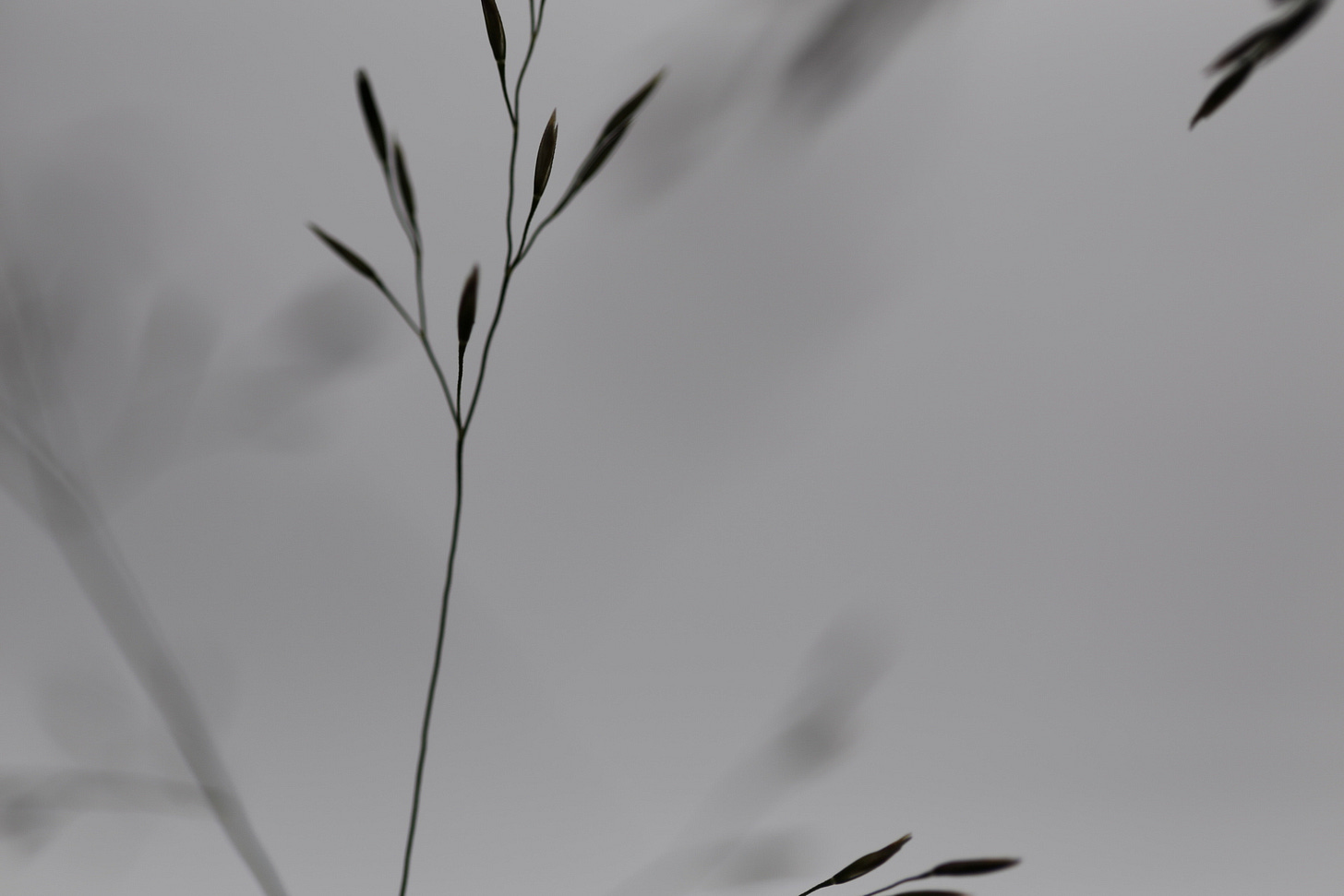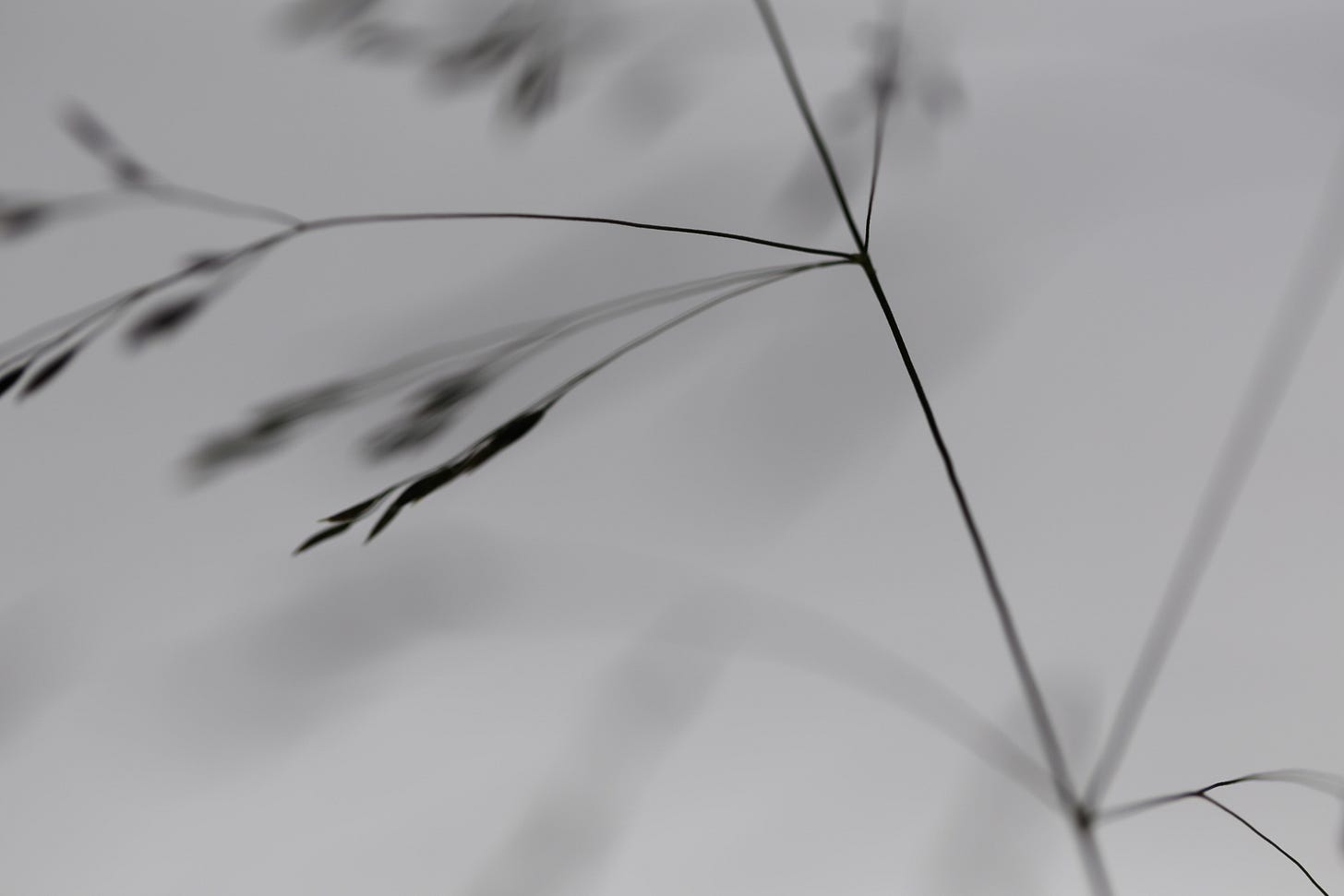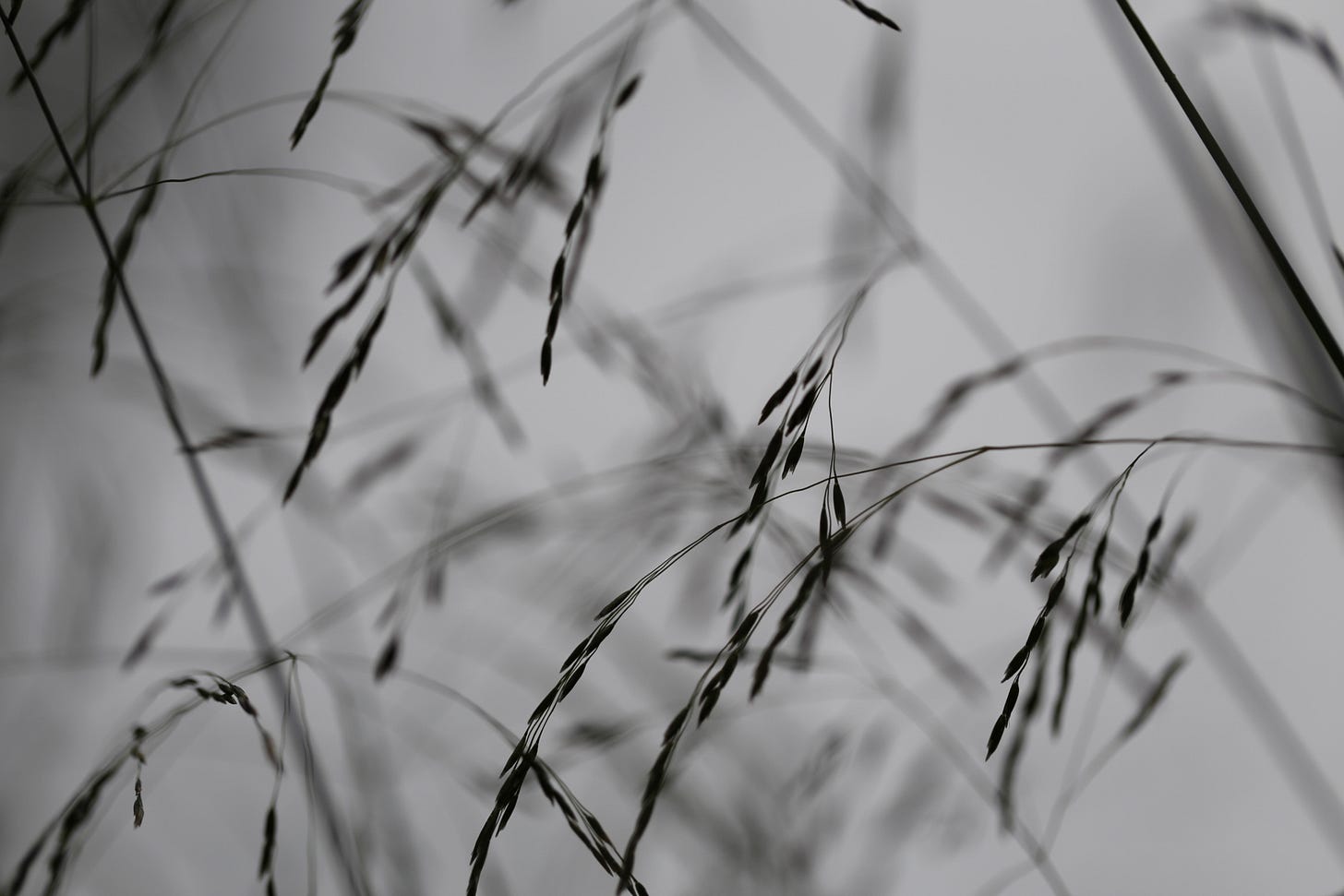Whispers in the gallery. What does your art & photography say about you?
Is the eye of the artist a reflection of the heart?
As summer remains on hold I thought I'd return to attempt the question about introspective narrative - the idea of visual art as a mirror - that my previous post prompted. What do our creations reveal? It’s been a deep dive and has resulted in a longer than usual read, so make yourself a cuppa. If this is your first letter, don’t worry, they’re usually shorter! I’ve included an audio reading, in case you prefer to listen - excuse the occasional stumble, after writing and editing this I confess I’m running on empty.
Greetings from the moss, and welcome to this week’s letter.
You know it’s July when the weather forecast on Radio Scotland opens with ‘Hello Folks, it’s a damp and dreich morning…’
I’m immensely grateful to those of you who are now recommending Flow: Letters from the Moss to your own readers; thank you, it means a lot.
Windows and mirrors in photography
John Szarkowski, the esteemed American photographer, curator and critic analysed and interpreted many works of art. One of his concepts was the idea of windows and mirrors in photography. You can find plenty online; nearly everyone seems to have written about it and I’m about to add to that. I’ve included a footnote1 that expands on the concept a little. One thing that I will pull out is this: Szarkowski never intended it to be interpreted as one or the other, but an axis that we all move back and forth along. This sometimes seems to get lost in translation and is why I’ve placed an emphasis on the and in the sub-heading. Below I consider it in practice and offer my own interpretation.
A means of enquiry
‘Windows’ seems relatively straightforward. Our pictures are a literal exploration of the world; the camera’s viewfinder or LCD screen affords us a window to frame and share what we look at. The image can usually be understood in subject, if not in meaning.
A tool for self-expression
‘Mirrors’ can be less clear (excuse the pun). We all know what one is: a pane of silver backed glass that reflects an image of whatever is placed in front of it. Szarkowksi’s concept was that photography was increasingly becoming reflective of the maker. It’s still an exploration of subject matter, but a more personal one viewed through their formative influences and mindset. The photograph may require more effort on the part of the viewer if they wish to interpret it; it could be abstract, the subject matter obscure or the context removed. It perhaps has a theme or message that reflects the photographer’s concerns. Mirrors have been described as an introspective narrative between the photographer and the viewer.
So what exactly is an introspective narrative? That well known search engine won’t give you an easy answer in the context of photography so here is my attempt; with time I may be able to express it better.
We may think that we are safely tucked away behind the camera or in the studio and our art does the talking for us, the emphasis firmly on the work’s subject and composition. As our practice becomes more personal, it whispers about us.
In the moment an image is made there is the physical reality that engages us, but also our unique perspective on it, along with the thoughts, feelings and sensations we experience while making it. We photograph, paint and draw what matters to us; we’re not just showing you what we saw, but what we felt too. It reminds me of a chapter title in Richard Mabey’s book ‘Beechcombings’ which I immediately took to: ‘Feeling Through the Eyes’. It says something eloquent about our visual response to the things that make us curious. That for me, is water and place, and I feel it through my eyes. Visual art is about subjects, moments and emotions that resonate, revealing our understanding of and connection to the world and the people around us.
Researching this I came across the following quote by Don McCullin:
“Photography for me is not looking, it’s feeling. If you can’t feel what you’re looking at, then you’re never going to get others to feel anything when they look at your pictures.”
If the work matters to us, we will want to share it, and with this we open up a conversation and begin to look for resonance. “Hey, I noticed this, you might like it too!” Our images have a lot to do: over and above visual interest we’re trying to capture a moment, the response it provoked in us and convey the emotion to you. Creativity engenders generosity. We hope you will like it but you weren’t there; we’re so close to what we photograph or make art about that we forget that you may need a helping hand. This is where words can come in - and sometimes it's easier to put this down on paper or screen than to say it out loud. Maybe through writing we’ll learn something too - we take so much for granted.
The axis of change
Moving from window to mirror isn’t a conscious decision. I don’t choose to make images of myself, or to reveal my soul; indeed the reason I first picked up my father’s camera in my teens was to avoid being its subject. I still ‘make’ windows: my recent monochrome images of abandoned crofts being one example. Curiosity has however led me through an evolution of image-making, and doubtless the results have become more reflective of the maker. Photography as a means of enquiry and a tool for self-expression.
Do you speak visual?
Last year I spent time and energy trying to understand my art and photography: what did it mean? How is it relevant? Read a few artist statements, particularly those in gallery art speak, and you can begin to feel that for work to be taken seriously, it needs to be intellectually placed. Personally, I think this can result in some pretty dry photographs.
The more abstract and ambiguous my images are, the greater the feeling or connection at the time they were made, one that compels me to try to preserve something of that sensation. They may engender a response on the part of the viewer, but that is not guaranteed.
What is our artwork saying?
What if anything am I trying to say with them, and does it matter? Each one is as individual as a portrait. ‘This is how I see you. In that moment you are, to me, beautiful.’ Beauty isn’t a popular term in contemporary art but it’s natural that we are drawn to it wherever we find it: the local, the easily overlooked, the small, each calls to me. I was going to say ‘the ordinary’ but that is a human term; nature is always extraordinary.
What I hope my images offer you is, among other things: momentary transport to another place, an evocation, a little tranquility. They may encourage you to better notice and value nature; to find something magical in the things that are always nearby; or just to go for that walk. Perhaps inspiration and encouragement in your own endeavours, or a simple brightening of your day - the latter is enough.
Is the eye of the artist a reflection of the heart?
An introspective narrative? Perhaps, but one that is largely instinctive, sometimes serendipitous, quietly empathetic. I’m still not photographing myself but in word and image I am baring mind, heart and soul: curious, restless, persistent, deeply felt. A naturally imperfect vision, alternating between sharp focus and soft blur; one shaped by nature and given voice by water. An inherent attraction to fluidity and yes, flow, in all things.
“Framed by the viewfinder, amplified by water, driven to seek, balancing two ways of seeing the world.”
Is the eye of the artist a reflection of the heart?2 What do you think? As ever, I’m curious…
A moment wrapped in visual form
I hope this conversation is helpful to you and the time writing it well spent. It has raised many questions and is an example of how contemplative writing can both inform and communicate our practice. In the ten months that I’ve been writing these weekly letters, some short, some longer, it has certainly deepened my connection with place. That feeling, again. I have found many more moments wrapped in visual form to share with you.
Before writing this, I would have said that most of my images are mirrors. Yet on the moss this week as I found flowers and fruit they seemed more ‘window’. I wondered about it, but am now better able to recognise that windows and mirrors are indeed on an axis and we’re unlikely to always be at the same point on it. The greater the abstraction, the closer I get to subject, the more play with focus and blur, and the increasingly fluid my images are, the more likely I think they may be considered mirrors. Is this reflective of me? I’m not sure, but I do know that they are the ones that I find most evocative. Perhaps the ambiguity within them also leaves more room for you to interpret them according to your own sensibilities.
I start and end my afternoon walk with alternative flowers: first reeds, later grasses. They’ve long captivated me and I’ve spent time before with a macro lens trying to record their (fluid) movement in a breeze. This time I’m just enjoying the shapes within the panicles, stems and leaves: line and curve, angle and intersection; the dark grass offset against white cloud; entrances and exits as the breeze plays with them, pulling away before pushing stems and seeds back into view; the negative space between. There’s something about the grasses’ delicacy that speaks to me; they look so fragile yet they endure. I wonder what that says?
What do you want to say with your photography, art or writing? What emotions or thoughts do you want to evoke? There is nothing to be nervous of - you don’t have to share your photographs, art, craft or writing if you don’t want to. We rarely know in advance exactly what we want to say, but find something that intrigues and see where it leads; language will follow.
Thank you for reading. I value each and every response to these weekly letters, and love to know what thoughts they prompt. I have it in mind to offer a number of exclusives including extended reads to paid subscribers, as a thank you for supporting my work here. I will still be writing to everyone but, if means allow, you might like to consider upgrading your subscription to enjoy these.
Until next week,
All words and images copyright © Michela Griffith except where otherwise noted
Footnotes
Szarkowski considered that there had been a shift in the concerns and motifs of American photographers in the 1960s and 1970s towards a more personal vision of the world and away from public concerns for social change.
Such personal visions take one of two forms. In metaphorical terms, the photograph is seen either as a mirror - a romantic expression of the photographer's sensibility as it projects itself on the things and sights of this world - or as a window through which the exterior world is explored in all its presence and reality.
It’s a much quoted concept that is sometimes presented as binary, yet Szarkowski did not consider it as such. "It must be emphasized that the distinction proposed here...is not intended as a method of dividing recent photography into two discrete and unrelated bodies. On the contrary, the model suggested here is that of a continuous axis. No photographer's work could embody with perfect purity either of the two divergent motives; it is the nature of his problem to find a personally satisfactory resolution of the contesting claims of recalcitrant facts and the will to form."
Interestingly, MoMa’s press release goes on to state that “What unites the photographers included in the exhibition is their common pursuit of beauty: that formal integrity that pays homage to the dream of meaningful life."
Much contemporary ‘art’ photography seems to have discarded that beauty…
I’ve drawn this from the press release issued by The Museum of Modern Art, New York, to publicise the exhibition Mirrors and Windows: American Photography since 1960
You can see all 160 pages of Szarkowski’s accompanying book here if you choose to.
I’d like to thank
from the wonderful community at for suggesting the line ‘Is the eye of the artist a reflection of the heart?’ in response to my draft headings.








There is much to ruminate on here and I found joy in listening to you read your composition. As tired as you may have felt making the recording, your voice comes across as strong and true. The few missteps only serve to make it more personal, and in some ways, better than a perfect read through. The pace is nice and I like that it allows me to soak up both your beautiful words and images as I follow along.
Photographer, artist, feelings. They are all such big words, so loaded with preconceptions and expectations. I hate artist statements by the way. They are too intellectual for me. As for feelings, it is perhaps because I am a man that I find feelings difficult to relate to linguistically. I had no language for them growing up. Was not really aware of them consciously. They occurred within me without my classifying or indeed understanding them and they remain somewhat elusive to this day. I do recognize their importance, but I find it difficult to relate feelings directly to photography. I prefer simple attraction as my guiding light. To follow my nose. To be led where I wander. To photograph as the moment suggests. To always seek out beauty either in the subject or the composition or in some other undefinable way that photography allows. Beauty is at the core of my attraction. I may not be able to describe it but I know when I see it. Beauty is magic made visible.
This interplay between reality and my subconscious while seeking out beauty is largely what brings me joy in the process of shooting. My brain is kept busy with the technical, but my body is directing how I move, my point of view, how I frame the shot. I try not to think too much as I work although I will allow myself to suggest something clever, a change of f-stop or shutter speed perhaps, to change the effect. For the most part, my brain knows what it is doing. I let it get on with things.
Instead, I focus on my attraction and play with the beauty I see before me. That may create a reflection of who I am or may reflect my feelings, but I won't see it or understand it at the time and I will leave it to the viewer to interpret what I am showing them. I believe viewers will also project themselves upon any photograph and so their experience in viewing it may be quite different from my own. It may be as much about their reflection as my own.
What a beautiful post! Yes, I believe the eye of the artist is a reflection of the heart. The key word for me here is “artist.” Anyone can take photographs or write words. An artist is differentiated by the lens (eye or camera) through which they view the world, and the connection to their heart that follows.